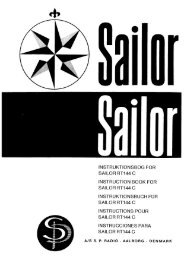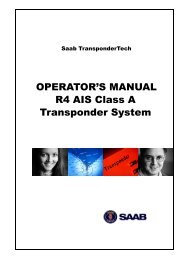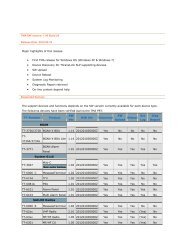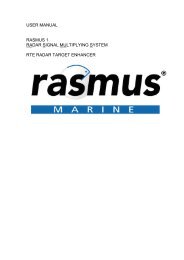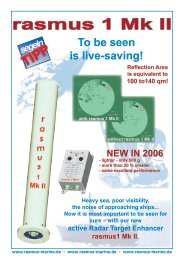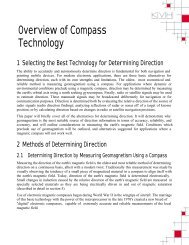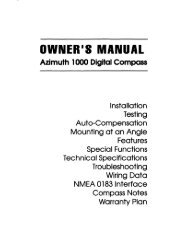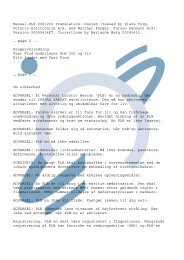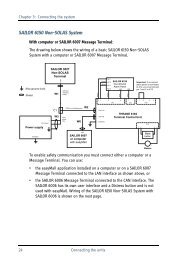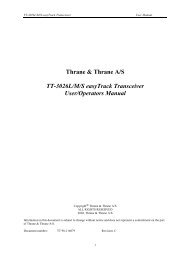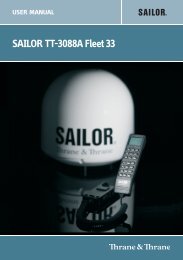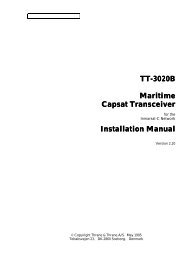TT-3000E mini-C GMDSS User Manual - Polaris-as.dk
TT-3000E mini-C GMDSS User Manual - Polaris-as.dk
TT-3000E mini-C GMDSS User Manual - Polaris-as.dk
Create successful ePaper yourself
Turn your PDF publications into a flip-book with our unique Google optimized e-Paper software.
<strong>TT</strong>-<strong>3000E</strong> <strong>mini</strong>-C <strong>GMDSS</strong> <strong>User</strong> <strong>Manual</strong><br />
Inmarsat-C this service is b<strong>as</strong>ed on so-called<br />
SafetyNET EGCs that can be addressed to ships<br />
within a given area.<br />
• Urgency and safety information that is<br />
communicated to coordinate specific distress<br />
efforts. This type of information may be sent <strong>as</strong><br />
EGCs but are more often sent <strong>as</strong> Messages to the<br />
specific ships that are involved in the operation.<br />
SafetyNET EGC reception<br />
The SafetyNET reception function is supported by the <strong>TT</strong>-<br />
<strong>3000E</strong> <strong>GMDSS</strong> system. A large number of SafetyNET EGCs<br />
are sent every day via Inmarsat-C and to limit the<br />
communication an EGC receiver can be set up to receive the<br />
relevant ones and discard the irrelevant.<br />
There are two mechanisms to facilitate this filtering: Each<br />
EGC h<strong>as</strong> a ‘service code’ that tells about the subject<br />
(weather forec<strong>as</strong>t, ice report, pilot service, etc.) and each<br />
EGC is addressed to a certain geographical area. An EGC<br />
receiver will disregard messages that do not match the<br />
current position and the service code list chosen by the<br />
user; there are some exceptions, though, since some EGCs<br />
must be received regardless of the user’s preferences.<br />
Area addressing can be either one of the MET/NAVAREAs (of<br />
which there are 16 covering all oceans) or a specific<br />
location given by coordinates. In either c<strong>as</strong>e the EGC<br />
receiver will use the current position to determine<br />
automatically which messages to receive. Besides using the<br />
current position, the <strong>TT</strong>-<strong>3000E</strong> system can also receive<br />
EGCs for other positions and NAVAREAs to receive EGCs<br />
that relate to, e.g., the destination harbour.<br />
Also an EGC may be addressed to a ‘NAVTEX costal area’ if<br />
it contains information that is only relevant for a small<br />
26



